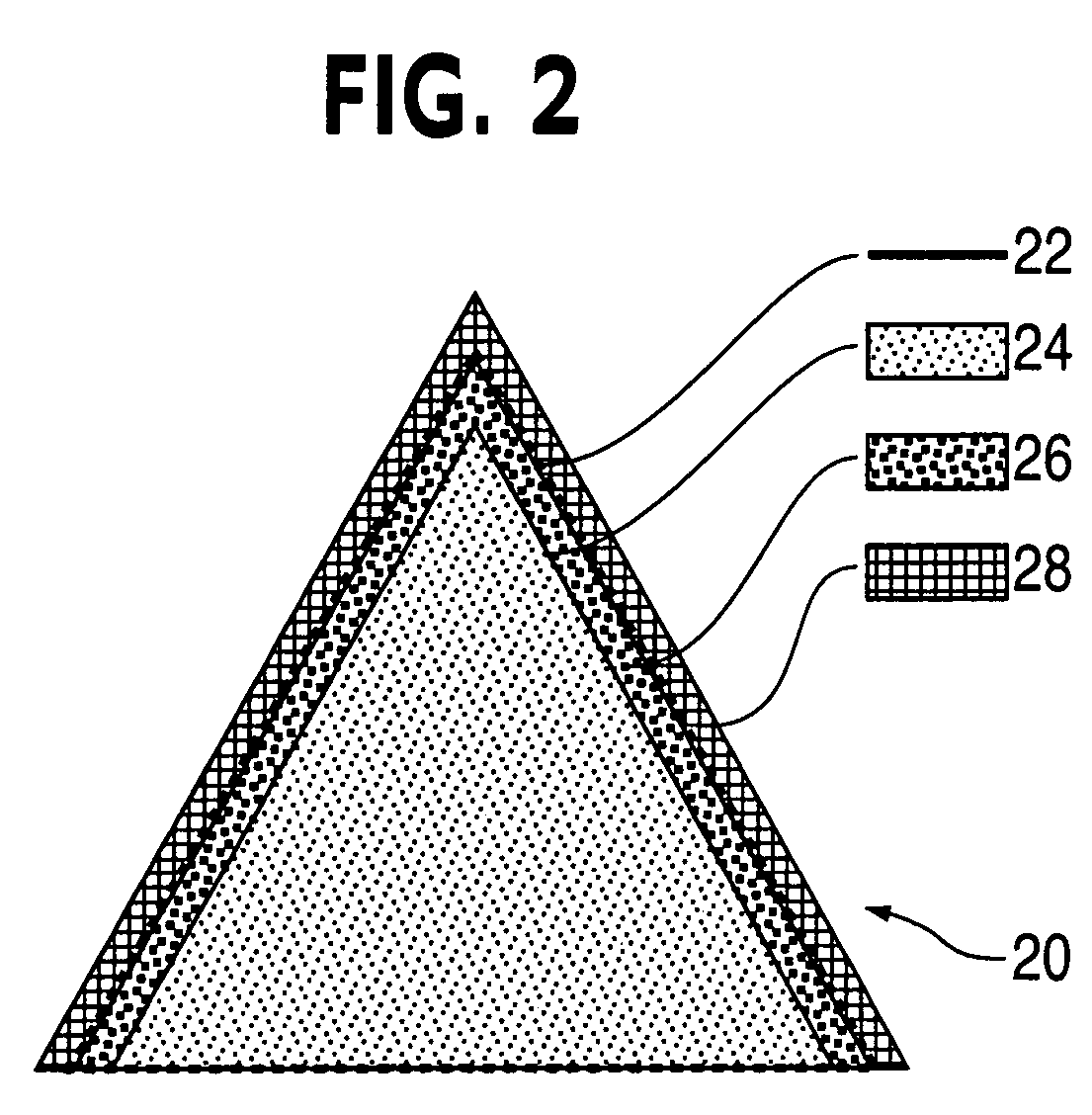Treatment process for improving the mechanical, catalytic, chemical, and biological activity of surfaces and articles treated therewith
a surface treatment and chemical technology, applied in the direction of vacuum evaporation coating, electric/magnetic/electromagnetic heating, coating, etc., can solve the problems of non-directional glow discharge sputtering (rf, dc, magnetron), chemical processes such as chemical machining and electropolishing cannot be used, and achieve the effect of improving texturing efficiency and reducing complexity and cost of processing
- Summary
- Abstract
- Description
- Claims
- Application Information
AI Technical Summary
Benefits of technology
Problems solved by technology
Method used
Image
Examples
examples
[0055]Treated Prosthesis with Improved Biological Activity
[0056]Referring to FIG. 6, articles that can benefit from application of the inventive uninterrupted two-step treatment process to improve the biological activity of surfaces of articles, include dental and orthopaedic prostheses used to restore dental and skeletal function. In the case of these prostheses it is necessary that after implantation in skeletal structures, natural bone grows and attaches itself directly to the surface of the prosthesis as firmly and as rapidly as possible so that normal function can be restored. FIG. 6 shows a conventional surface of an implanted prosthesis and describes the initial biological events that must proceed in order for natural bone to grow onto the surface of the prosthesis, become mineralized, and form a firm bond. The surface 61 of the prosthesis is shown to be coated 62 with calcium hydroxylapatite (HA) in crystalline form with crystal dimensions on the order of 10 micrometers or l...
PUM
| Property | Measurement | Unit |
|---|---|---|
| thicknesses | aaaaa | aaaaa |
| thicknesses | aaaaa | aaaaa |
| temperatures | aaaaa | aaaaa |
Abstract
Description
Claims
Application Information
 Login to View More
Login to View More - R&D
- Intellectual Property
- Life Sciences
- Materials
- Tech Scout
- Unparalleled Data Quality
- Higher Quality Content
- 60% Fewer Hallucinations
Browse by: Latest US Patents, China's latest patents, Technical Efficacy Thesaurus, Application Domain, Technology Topic, Popular Technical Reports.
© 2025 PatSnap. All rights reserved.Legal|Privacy policy|Modern Slavery Act Transparency Statement|Sitemap|About US| Contact US: help@patsnap.com



